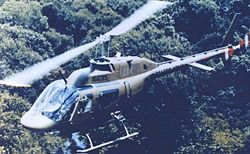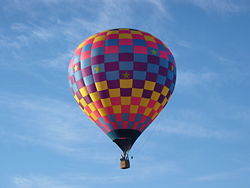Aircraft
Aircraft are vehicles capable of sustained flight within the Earth's atmosphere.
Vehicles that travel beyond the Earth's atmosphere, normally defined as 100,000 meters altitude, are called spacecraft.
Types
Most aircraft remain aloft by pushing air downward, in other words creating aerodynamic lift, are called heavier-than-air aircraft. Examples are airplanes, gliders, and helicopters.
Aircraft remain aloft by using low density gas to create buoyancy, called aerostatic lift, are called lighter-than-air aircraft. Examples include balloons and airships.
History
The first flight of a human being was made in Paris in 1783 in an aircraft built by the Montgofier brothers.
Although there remains some controversy about who should be credited with the first heavier-than-air flight, the honor is most commonly assigned to the Wright brothers for their flight at Kitty Hawk, North Carolina on December 17, 1903.
The first supersonic flight was made on Oct. 14, 1947 by Captain Charles "Chuck" Yeager in the Bell X-1 by reaching about 700 miles per hour (Mach 1.06) at an altitude of approximately 43,000 feet.



